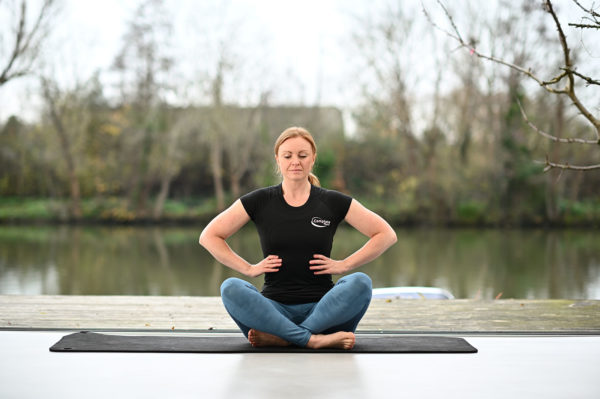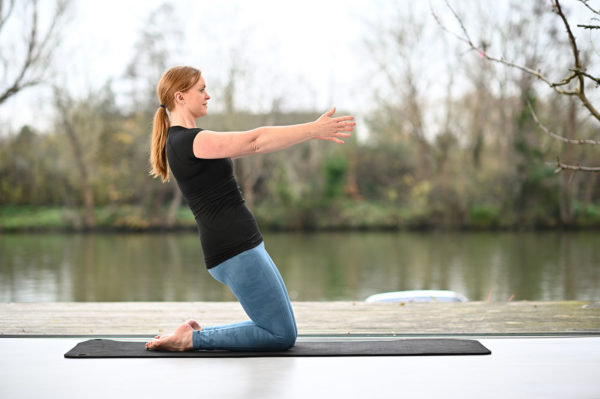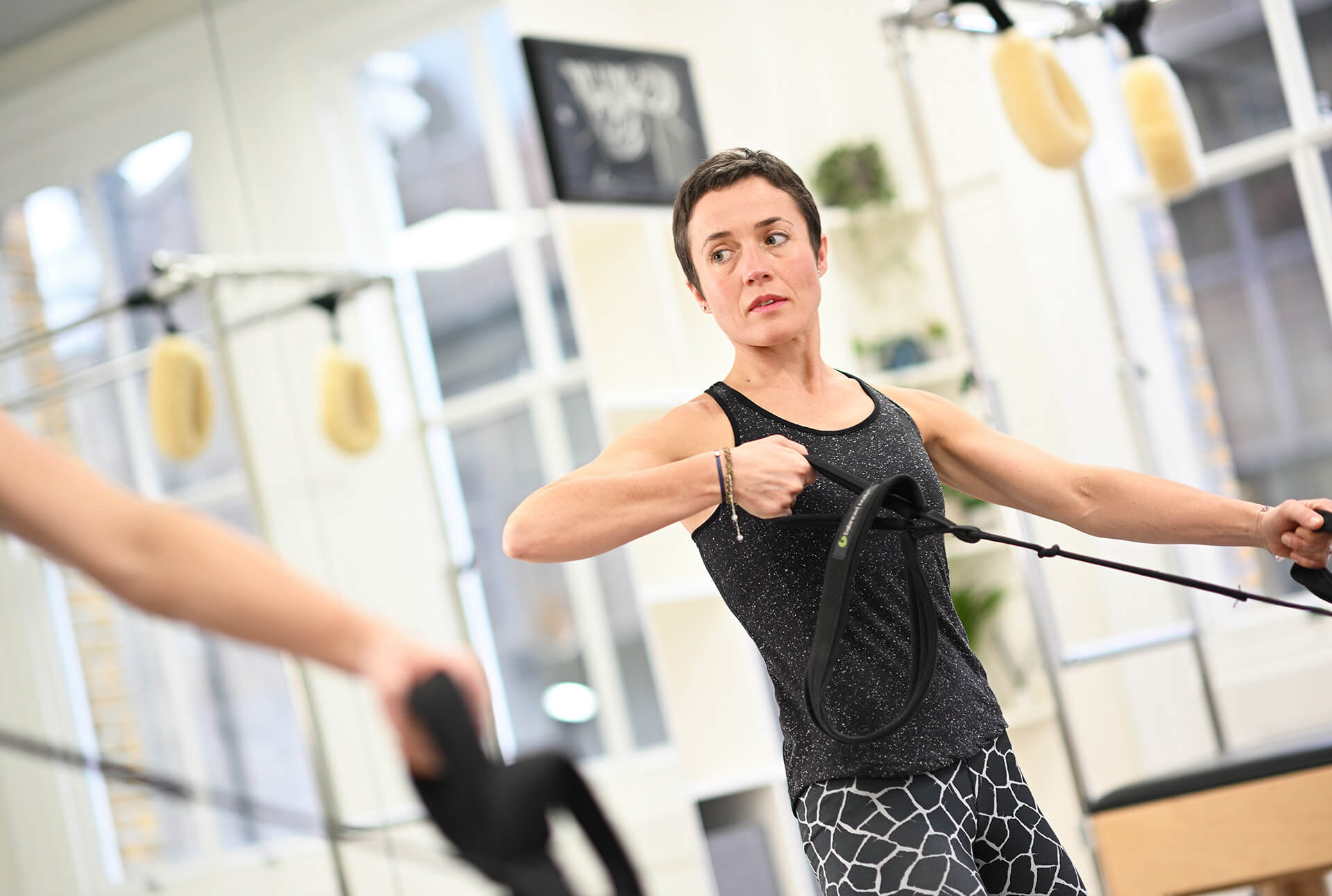In light of World Menopause Day on the 18th of October, at Complete Pilates, we want to shine a light on the common symptoms of menopause but also how women can manage the impact of menopause.
In the UK, an estimated 13 million women and open in a new page are going through menopause with 1 in 4 suffering debilitating symptoms that can be quite severe and have a significant impact on everyday activities.
Other astonishing facts about menopause from Menopause Support include:
- Symptoms can last up to 15 years
- Over 60% of women experience symptoms
- Almost half of menopausal women say they feel depressed
- A third of women say they suffer with anxiety
- Approximately two thirds of women say there is a general lack of support and understanding
Recently, TV star Davina McCall and Sophie, Countess of Wessex have both spoken out about the experiences they’ve had going through menopause. And this has seen a notable shift in people taking to the likes of Google to search for common menopause queries. According to Google trends, searches for “menopause” and “menopause treatment” are up 136% whilst “menopause symptoms” has risen 135% compared to this time last year!
Menopause is common and happens to all women. However, generally we all know very little about it and are surprised by what happens.
In light of this, Helen O’Leary Chartered Physiotherapist, Clinical Pilates Instructor and Director of Complete Pilates has provided answers to some of the UK’s most-searched menopause questions.
Symptoms of menopause
The first thing to understand is that menopause is when you have stopped having periods for a period of 12 months. Prior to this, your periods start to become less frequent before stopping all together. Menopause is a natural occurrence in women and happens because of declining hormones such as oestrogen. For most women this will happen between the ages of 45-55 but it can happen earlier.
Every woman will go through menopause and a lot of women will experience menopausal symptoms with it. The severity of symptoms varies from individual-to-individual. This can range from severe and impacting everyday activities to light headaches
Common symptoms of menopause include:
- hot flushes – these are sudden feelings of heat which are usually around your face and chest and can make your skin red and sweaty.
- night sweats – these are hot flushes which occur at night
- vaginal dryness and discomfort during sex
- difficulty sleeping which can make you feel tired or irritable
- low mood or anxiety
- reduced sex drive (libido)
- joint stiffness or generalised aches and pains
- problems with memory and concentration
Menopausal symptoms can begin months or years before your periods stop and lasts anywhere between 4-15 years after your last period.
Menopause exercise – up 140%
Exercise is used by many women to help manage menopause symptoms. Whilst there is only moderate research on this, there is significant amounts on how good it is at maintaining your weight, improving your mood, protecting your heart and lungs, reducing stress, improving your sleep and reducing joint pain.
So where do you start?
For those wanting to know the best exercises to do while going through menopause, or just want advice about where to start, my advice is to mix your training up and remember to ask for help.
Variety in your training is key to getting the maximum health benefits from your activity. By constantly mixing it up, it will also help you control any weight gain and leave you feeling more body confident. However, if in doubt, always speak to someone who can direct you where to start.
Pelvic health physios should be your first port of call. They are specifically trained in all things to do with the pelvis and surrounding area and are there to help you through menopause. The goal is to get you moving, not stop you, so don’t be afraid to seek help from a professional! If you are new to exercise or are noticing that you feel like you need to change the type of exercise you are doing, try starting here.
Additionally, make sure that you add weights and impact work into your training. Bones love this added load and this variety in training will keep you strong and mobile. It will also be more interesting as you aren’t doing the same thing all the time!
Weights do not have to be heavy, and impact does not have to be running! Walking around and using light weights will help you as well. Try investing in a strength and conditioner or personal trainer if you have never been in the gym before. If you are having any symptoms, it is also worth speaking to a pelvic health physio who can advise you on the best exercise for you. Remember, getting hold of any problems early is key to progressing and making sure you do not have to stop anything.
Finally, remember your stability work! Pilates is a great way of making sure all the deep muscles are working well. It is also brilliant at ensuring your pelvic floor is working through full range so staying strong and bouncy. The springs in equipment Pilates will also challenge you and help you stay strong and balanced!
Remember It’s important to eat a healthy, balanced diet and exercise regularly – maintaining a healthy weight and staying fit and strong by doing things like walking, running or Pilates can improve some menopausal symptoms.
Pelvic exercises – up 42%
When women are going through menopause, your hormone levels change and so will your body. This is really normal but is often a time when underlying issues, such as incontinence, start to become more apparent. Often these may have started if you had children or when you were giving birth. However, your body was strong enough at the time to cope with it. 1 in 3 women leak urine in an external page and this generally becomes apparent in pregnancy, postnatal or during menopause.
Seeking advice and addressing your pelvic health with a physio and qualified clinical Pilates instructor will help you to both strengthen and mobilise your pelvic floor. It is not simply about holding on and bracing, but you need to keep it moving like any muscle. This means through its full range of motion!
Reducing your liquid intake or just simply trying to hold on often makes it worse as it can irritate the bladder. Instead, learning how to use your pelvic floor through its full range of movement will help with incontinence. Pilates is great for this as it focuses on the core – this is not just your abs but also includes your deeper back muscles, diaphragm and pelvic floor. See below for specific pelvic floor exercises.
Brain fog – up 163%
Often we hear women say that they cannot focus, or they lose their train of thought as they are going through menopause. Pilates focuses on the mind-body connection and how to strengthen it. This means that your concentration will start to improve as well.
In Pilates, people get through the session and feel they have had a mental workout as well. It forces you to focus on one thing which is your body. You effectively clear your mind of other distractions.
Learning a new task has been scientifically shown to help brain health. So, if you haven’t done Pilates before, you get the benefits of everything that comes with exercise, everything that comes with concentration, and you begin to listen to your mind-body.

Menopause oestoporosis – up 335%
As your hormone levels change, women may be told they have reduced bone density. This is really common and is not something to be feared. However, it is important to try to prevent falls. Falls are the most common cause of fractures which is actually the biggest concern with osteoporosis.
Pilates uses movements which work on your balance and strengthen your deeper stability muscles. This reduces the likelihood of falling. It is also really easy to modify core movements so that you do not do repetitive flexion (like a sit-up). This is a movement which we recommend you avoid in your training if you have been told you have osteoporosis. There are so many other movements that you can do and still get your abs going, you don’t need to worry about avoiding sit ups!

4 Pilates Exercises for Menopause
Below are four simple Pilates exercises which you can do at home, in your own time and space, to help you manage your Menopause. They are all safe, provided you are pain-free and mobile. Anyone can do these movements and they are a great way of getting started with exercises at home.
1. Pelvic Tilts
- Lie on your back with bent knees and the soles of your feet on the floor. In this position, the natural curve of your lumbar spine will lift the lower back slightly off the floor.
- Exhale and gently rock your hips toward your head. As you do this, you’ll feel your lower back pressing gently into the floor.
- Stay here for a few breaths
- Inhale and return to your natural position.
- Repeat five-ten times.
Getting the simple activation and movement around your pelvis will enable you to connect with your pelvic floor and deeper abdominal muscles. Learning how to do this well is key as it is the basis for a lot of your movements! It will also help with symptoms such as incontinence. Although this lying down is not the only place you want to be doing your pelvic floor exercises, it is a great place to start!
If you are struggling to feel your deeper abs and pelvic floor, put your pelvis on some pillows so gravity can help you.
To progress this movement, try it in sitting and standing with your knees slightly bent. This will mean that you work against gravity. Just remember that you need to let go as much as connect!
2. Quadruped
- Come to all fours. Your hands roughly under shoulders and your knees directly under your hips.
- Do a few cat cows to find your middle ground
- Press into one arm and the opposite leg and allow the other leg to slide out behind you and the arm to slide over head.
- When your limbs are fully straight, reach them further away to start to lift them off the floor, staying in your spine neutral.
- Look at your supporting leg and make sure that it is vertical as you do this
- Slowly lower your toe and hand back toward the floor, before sliding it back underneath you
- Switch side to side, trying to stay as stable as possible and keeping the scruff of your neck lifted.
Weight bearing on your arms is key. Keeping up your tricep strength has been proven to reduce the likelihood of wrist fractures if you fall. This movement not only does that but also works on your core muscles. Try doing it really, really slowly and adding a hold as you reach the arms and legs away. This will challenge you more in your stability muscles!
3. Knee Hovers
- Come to all fours, bringing the shoulders roughly over the wrists, hips directly over the knees
- Press into the floor with both arms to keep your upper back lifted
- Tuck the toes under and breathe
- Keep the scruff of your neck lifted against gravity and your arms strong
- As you exhale, press into the hands and feet to lift the knees up to a hover off the floor
- Keep the knees 1-3 inches off the floor and hold. Keep breathing!
- Hold for 3-10 breaths…this makes sure that your core is working well!
- Slowly bring the knees back down onto the mat.
Top tips:
- Make sure you lower your knees really slowly to the floor to challenge your lower abs.
- Progress by rocking slowly rock back and forth or side to side
4. Scooter
- Place your hands on your hips and sit them backwards like you are sitting on a high bar stool
- Have a slight bend in your knees and transfer the weight to one leg.
- Make sure you are leaning forwards so that your lower back doesn’t pinch!
- Slide the other leg in and out, making sure it goes all the way to straight.
- Keep standing into the heel of your static leg so that you feel your glutes working more
- Repeat several times before changing to the other side.
Adding in standing weight-bearing is great but this also works on your balance as well as getting your glutes and legs firing. Try going sideways with the moving leg as well as backwards to add an extra challenge.
How Pilates and menopause work together
The machines may look terrifying, but they really do feel lovely to work on. If you are a bit nervous, try some one-ones to help build your confidence. You can also call the studio and ask to speak with someone before booking. They should be able to explain the classes and help you make a decision about what is best for you.
During your class or one-one session, your instructor should also be able to explain the movements and the equipment. Remember, knowledge is power so the more you know the more you can help yourself! Ask lots of questions as this will help you understand.
It is always nerve wracking starting something new so why not find a recommendation from a friend or even try a few different places. This practice is as much about you clicking with the instructor you see as it is about moving. You need to enjoy it in order for you to continue so make sure you feel good at the end and speak up if something doesn’t feel great!
If you have any questions about Pilates and menopause then please get in touch. We are happy to help and can direct you on what may be best for you at this time.
We look forward to speaking with you soon!
Education is key:
These blogs are designed to give information to everyone, however, it is important to remember that everyone is different! If you have not seen one of our therapists and have any questions about injuries, what you have read or whether this may be useful to you, please just ask. We are more than happy to help anyone and point you in the right direction. Our biggest belief is that education is key. The more you understand about your injury, illness and movement, the more you are likely to improve.




